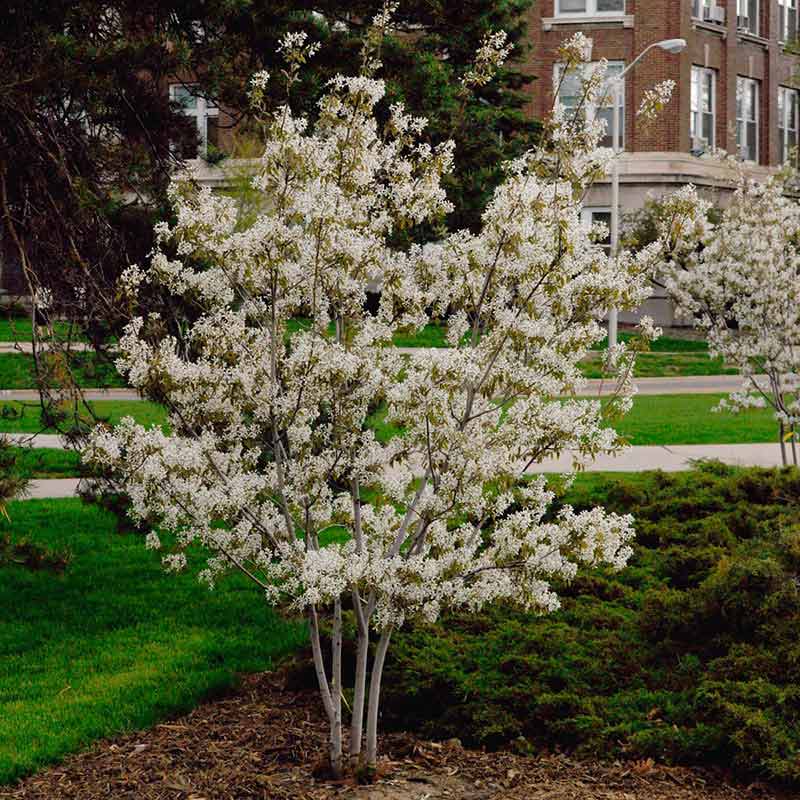

It has no significant negative characteristics.Īutumn Brilliance Serviceberry is recommended for the following landscape applications Īutumn Brilliance Serviceberry will grow to be about 25 feet tall at maturity, with a spread of 20 feet. It is a good choice for attracting birds to your yard, but is not particularly attractive to deer who tend to leave it alone in favor of tastier treats. This is a relatively low maintenance tree, and is best pruned in late winter once the threat of extreme cold has passed. Its relatively fine texture sets it apart from other landscape plants with less refined foliage. The smooth gray bark adds an interesting dimension to the landscape.Īutumn Brilliance Serviceberry is an open multi-stemmed deciduous tree with a more or less rounded form. The oval leaves turn an outstanding brick red in the fall. It has dark green foliage throughout the season. Make sure the cut is clean, without accidentally peeling off bark or leaving a frayed edge to the cut.Autumn Brilliance Serviceberry is covered in stunning clusters of white flowers rising above the foliage in early spring before the leaves. Place your clippers just outside the branch collar, where the secondary branch meets with a larger one. When making a pruning cut, it’s best to cut the branch back to a lateral branch, rather than just trimming off a few inches of new growth. When you are pruning for shape in spring or fall, one of the considerations you should have in mind is opening up the center of the canopy so that air and light can get in and benefit the whole tree. The trick to proper pruning is to take it slowly and to step back frequently from your work to assess the tree as a whole. Achieving maximum resultsĪlthough they are relatively care-free, Autumn Brilliance serviceberry trees, like most fruit trees, benefit from judicious pruning. They will continue to ripen after picking, and are best stored in the refrigerator and used within a week. The fruits are easily damaged and are best harvested by hand early in the day when it is cool and dry. Wait to harvest until two-thirds of the fruits are soft and a deep blue in color. The Autumn Brilliance Serviceberry tree’s fruits will ripen in late June through July in most regions. Cut out infected areas, and use a fungicide to mitigate damage. Diseases that may appear on your serviceberry include entomosporium leaf spot, fire blight, and rust. A well-maintained tree should be able to fend off any attacks, but an organic insecticide can be used, or you can release beneficial insects such as ladybugs. They may occasionally experience insects such as aphids, bark beetles, and flatheaded borers. Serviceberry trees are generally healthy plants without a long list of pests and diseases that prey on them. To shape the tree, prune in late winter before bud break or in autumn. You can also prune at any time of the year to remove dead, damaged, or diseased branches, as well as those that are rubbing against each other. First, if you wish to grow your plant as a single-trunk tree, clip off any suckers that sprout from the base of the trunk whenever you see them. There are a few pruning tasks that come with your Autumn Brilliance serviceberry. Bees do the heavy lifting of pollinating the myriad flowers that the serviceberry puts forth every spring. Thus, you can have fruit even if you have only one tree - although you may see an increased yield if you have more than one. Serviceberry trees are monoecious, meaning that a single plant has both male and female reproductive parts. Follow package directions, tapering off during the winter. Fertilize your serviceberry tree during the growing season with a balanced, slow-release product that’s designed for landscape trees and shrubs. A mature tree may only need water during very hot weather or droughts. Once the tree is established and you see signs of robust growth, taper back to a once-a-week watering. When newly planted, water your Autumn Brilliance serviceberry tree every few days, stopping when the water begins to pool around the root zone.


Place a 2- to 3-inch layer of an organic mulch, such as bark chips, around the root zone, taking care that it does not touch the trunk. Fill in around the tree with good-quality topsoil, tamping down as you go to avoid air pockets. Throw a few handfuls of well-rotted manure or compost in the hole, and place the sapling on top of it. Dig a hole that’s as deep as the root ball and twice as wide. Unpot the sapling and tease out any encircling roots, which can girdle the tree and slowly kill it. Site your serviceberry tree in a spot that gets good sunlight for at least four hours a day, in soil that drains well.
#Serviceberry autumn brilliance update
By Mary Van Keuren | Gardener (30+ Years Experience) – last update on April 20, 2022


 0 kommentar(er)
0 kommentar(er)
